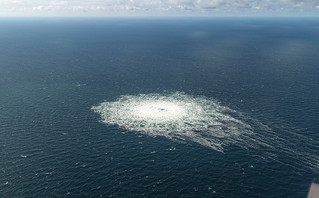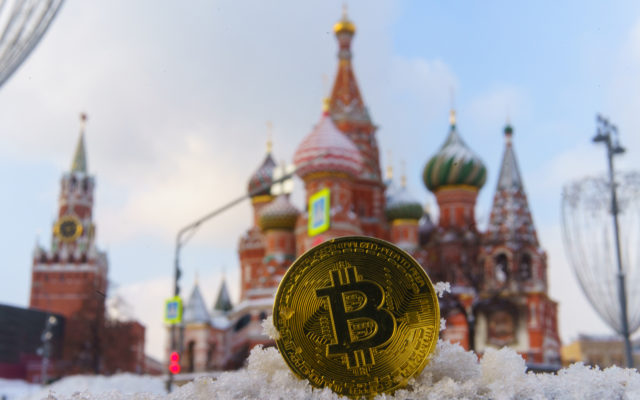The president of Russia launched a direct attack against the “Anglo-Saxons” on Friday (9/30), Vladimir Putin accusing them of being responsible for her blowing up the Nord Stream gas pipelines. At the same time, a report by Denmark and Sweden to the UN notes that “leaks from the explosions are equivalent to hundreds of kilograms of TNT.”
“Sanctions were not enough for the Anglo-Saxons: they proceeded with sabotage,” Putin said. “It’s hard to believe, but it’s a fact that they orchestrated the explosions on the international natural gas pipeline Nord Stream” pointed out the Russian president.

Who is accused?
So far, most governments and officials have avoided directly pointing to anyone responsible, although some have hinted more strongly than others.
European Union states say they believe the damage was caused by sabotage, but have stopped short of naming specific individuals. Fatih Birol, the head of the International Energy Agency, said it was “very obvious” who was behind it, without naming anyone.
Kremlin says claims of Russian responsibility ‘nonsense’ and Russian officials have said Washington has an incentive if it wants to sell more liquefied natural gas (LNG) to Europe.
President Vladimir Putin called the incident “unprecedented sabotage” and an “act of international terrorism”, while Russian intelligence chief Sergei Naryskin said the West was doing “everything it can” to cover up the perpetrators.
The White House rejected accusations that it was responsible. US Defense Secretary Lloyd Austin said it was too early to assign responsibility and a full investigation was needed. “As far as attacking – or damaging the pipeline natural gasat this stage I think there is a lot of speculation,” he said.
Why sabotage a pipeline?
German Navy Chief Jan Christian Kaack told German newspaper Die Welt in Monday’s edition, the day the leaks were discovered, although he was apparently speaking before the news broke: “Russia has also acquired a significant undersea capability. On the bottom of the Baltic Sea, but also in the Atlantic, there are several critical infrastructures, such as pipelines, or submarine technology cables.”
Alongside the Nord Stream, a new one has been built conduit between Norway, which produces gas, and Poland, which seeks to end its dependence on Russian energy, making the region particularly sensitive to Europe’s energy security.
“(Russia) can intimidate the Europeans through an act of sabotage. Because if they can blow up those pipelines at the bottom of the Baltic, they could blow up the new pipeline as well,” said Christine Berzina, senior fellow for security and defense at the German Marshall Fund.
However, if it was an act of sabotage, it destroyed pipelines built by the Kremlin-controlled Gazprom and its European partners at a cost of billions of dollars.
The damage also means Russia loses a leverage it continued to have on Europe, which is trying to find other imgs of gas supplies for the winter, even though the Nord Stream pipelines were not carrying gas when the leaks were discovered, analysts say.
Whoever, or whatever, is responsible, Ukraine can also be considered favored. Kyiv has long called on Europe to stop all purchases of Russian fuel – even though some gas continues to be transported to Europe via Ukraine. The disruption to the operation of Nord Stream brings Kiev’s demand for a full embargo on Russian fuel one step closer to its implementation.
How might Nord Stream have been damaged?
Experts say the extent of the damage and the fact that the leak points are far apart and in two different pipelines indicate that the action was deliberate and well-orchestrated.
Seismologists in Denmark and Sweden said they recorded two strong explosions on Monday near the spill points and the explosions occurred in the water but not below the bottom.
A img in the British defense services told Sky News that the attack was likely premeditated and was detonated remotely using underwater mines and other explosives.
“Something big caused these explosions which means… that Russia could do it. In theory, the US could do it too but I really don’t see the motivation for it,” Oliver Alexander, an intelligence analyst, told Reuters.
The U.S. has long called on Europe to end its dependence on Russian gas, he said, but Washington apparently had little incentive to act now because Nord Stream was no longer carrying gas to Europe at the time the leaks were discovered. although there was gas under pressure in the pipelines.
Analysts say it’s possible the damage could have been caused by devices that are widely available, but given the scale and precision, it’s more likely to have been carried out by someone with access to more sophisticated technology.
Russia believes there is a state actor involved.
“It is very difficult to imagine that such an act of terrorism could happen without state involvement, in some way,” Kremlin spokesman Dmitry Peskov said. “It is a very difficult situation that requires an urgent investigation.”
US news network CNN, citing three imgs, reported that European security officials had observed Russian navy support ships and submarines in close proximity to the sites of the Nord Stream leaks. Asked about this report, Peskov stated that there was a much larger NATO presence in the region.
At Russia’s request, the United Nations Security Council is meeting today to discuss the damage to the pipelines, while the Europeans move forward with their own investigations.
For now, however, more direct attribution of blame between Russia and the West could exacerbate tensions already escalating over the war in Ukraine, said Marek Swierczynski, an analyst at the Polish institute Polityka Insight.
Source: News Beast
I’m Robert Neff, a professional writer and editor. I specialize in the entertainment section, providing up-to-date coverage on the latest developments in film, television and music. My work has been featured on World Stock Market and other prominent publications.







